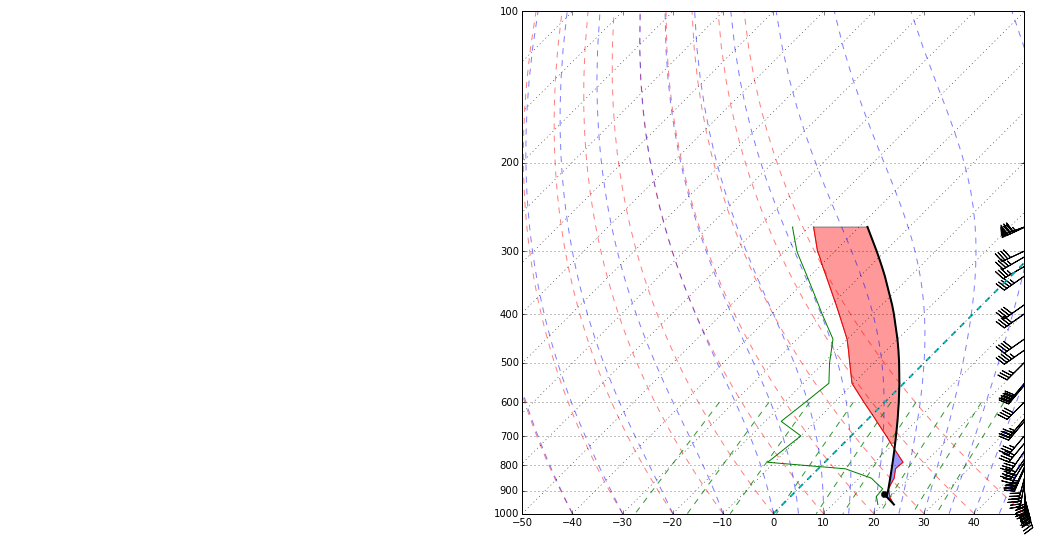# Create a new figure. The dimensions here give a good aspect ratio
fig = plt.figure(figsize=(9, 9))
skew = SkewT(fig, rotation=45)
# Plot the data using normal plotting functions, in this case using
# log scaling in Y, as dictated by the typical meteorological plot
skew.plot(p, T, 'r')
skew.plot(p, Td, 'g')
skew.plot_barbs(p, u, v)
skew.ax.set_ylim(1000, 100)
skew.ax.set_xlim(-40, 60)
# Calculate LCL height and plot as black dot
l = lcl(p[0], C2K(T[0]), C2K(Td[0]))
skew.plot(l, K2C(dry_lapse(l, C2K(T[0]), p[0])), 'ko',
markerfacecolor='black')
# Calculate full parcel profile and add to plot as black line
prof = K2C(parcel_profile(p, C2K(T[0]), C2K(Td[0])))
skew.plot(p, prof, 'k', linewidth=2)
# Example of coloring area between profiles
skew.ax.fill_betweenx(p, T, prof, where=T>=prof, facecolor='blue', alpha=0.4)
skew.ax.fill_betweenx(p, T, prof, where=T<prof, facecolor='red', alpha=0.4)
# An example of a slanted line at constant T -- in this case the 0
# isotherm
l = skew.ax.axvline(0, color='c', linestyle='--', linewidth=2)
# Add the relevant special lines
skew.plot_dry_adiabats()
skew.plot_moist_adiabats()
skew.plot_mixing_lines()
# Show the plot
plt.show()
